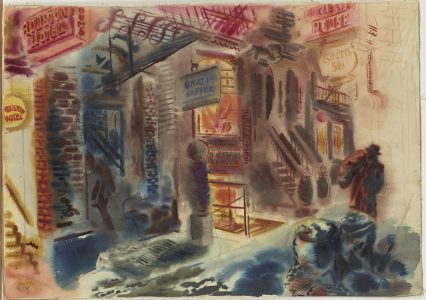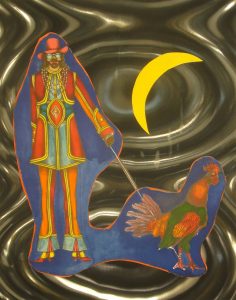
Work of the Week: George Grosz, “City Lights”
Grosz lived in Europe during the First World War and experienced chaos and political upheaval before he emigrated to the United States in 1933. His work is characterized by bold criticism of the political class and military officials, and a pessimistic view of society; he had joined the rebellious Dada movement in Berlin in 1918 and later, together with artists Otto Dix (1891-1969) and Max Beckmann (1884-1950), they became known as Neue Sachlichkeit or New Objectivity. During the Second World War Grosz lived in New York where he taught at the Art Students League. His encounter with the metropolis is documented in numerous works from the 1940s, which focus on various aspects of the city. The war altered life in New York with many institutions temporarily transforming their facilities to accommodate production for the war effort and implementing the dimming of neon signs and lights to avoid potential enemy attacks.


